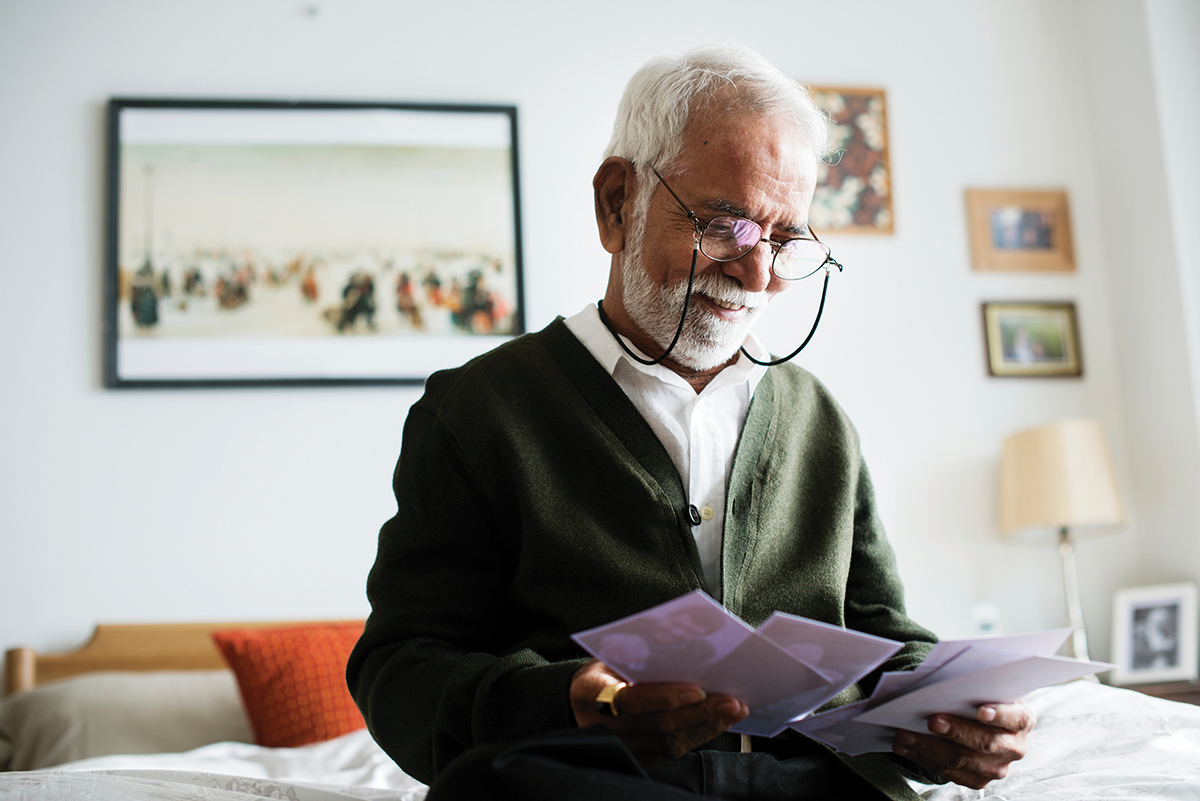We often only really know people in snapshots, through the role they played in our lives rather than the sum total of their experiences and life events. When loved ones die and we’re left to sort through their belongings, new dimensions of their life stories and personalities are revealed within the cupboards, drawers and storage bins of their homes: old love letters, the remnants of abandoned hobbies or a penchant for saving every elastic band, string tie or margarine container for some imagined future purpose.
That’s similar to what Rev. Fran Ota, a United Church minister in Scarborough, Ont., experienced in the five years she has spent clearing out her mother-in-law’s home. “[She] was very much a product of wartime Japan: nothing was ever thrown out if it might someday be useful,” says Ota. “After her death at 91, we were stunned at what she had kept. . . . All her western-style clothes dating back to the 1940s, cleaned and hung with cedar. Her kimono from her wedding in 1944. . . . Bolts and bolts of kimono fabric, some of it quite expensive, stored in a cedar chest. Pots, pans and dishes. . . . And salted away in tiny crannies all over the house, her most expensive jewelry.”
There were many precious items, to be sure, but also lots of junk, like the dozens of disposable toothbrushes collected at various hot springs over the years. “It felt like snooping, prying behind her back to begin sorting things,” Ota reflects.
Sifting through the possessions of a deceased person, especially a beloved parent, sibling or friend, can be an emotional and exhausting process. Without the owner present to provide useful anecdotes or context, it may be difficult to decide what should be kept and what can be tossed.
That’s why many experts are now urging the living to get sorting before it’s too late. The Swedish tradition of “death cleaning,” as it’s known, sounds gruesome, like the title of a new police drama, but it’s actually not scary at all. It simply involves paring down your worldly possessions for easier distribution and disposal after your death. And it makes life simpler for your loved ones, who will have to organize your estate in the midst of grieving.
Decluttering for the inevitable end may also be considered a spiritual practice. In our death-denying culture, taking time to appreciate the memories associated with a lifetime of belongings before letting them go can be an exercise in both gratitude and acceptance. As the Apostle Paul wrote in 1 Timothy 6:7, “For we brought nothing into the world, and we can take nothing out of it.” But we certainly amass a lot of stuff in between.
“It is amazing, and also a little strange, how many things we accumulate in a lifetime,” writes Margareta Magnusson in her book, The Gentle Art of Swedish Death Cleaning: How to Free Yourself and Your Family from a Lifetime of Clutter. “Your loved ones will not be happy people when they have to do your organizing for you.”
In recommending the Scandinavian tradition of döstädning, as it’s known in Swedish, she advises practising minimalism throughout our lives and not just when we’re facing death. Where to begin? For her, it’s the clothes closet because it’s not wrapped up in sentiment and it’s relatively easy to cull clothing she hasn’t worn in years.
Marie-Therese Nyman, 55, of Cornwall, Ont., relocated from Sweden to Canada in 1984 and has recently taken up her homeland’s unique cleaning strategy by going through toys and boxes of tax returns and 40-year-old letters. Whenever she finds it hard to part with a particular item, she takes a snapshot of it to place in a photo book. “Your kids are not going to want that box of stuff that means nothing to them but so much to you,” she says. Her goal is to whittle most of her belongings down to a small collection of heirlooms and a book of memories.
Julie Keon, a life-cycle celebrant from the Ottawa Valley, offers the five-week course Ready or Not! Preparing for the Inevitable. It provides people with tools and tips to manage the practicalities of their own death and its aftermath. Part of the course deals with death cleaning. She teaches her students to purge unnecessary objects from their home and helps them create a “death box,” which they fill with all the items and documents their family will need upon their death.
“Many of us believe that we will die years from now and will have time to get our affairs in order. I know all too well that death comes to people of all ages in a variety of ways, often suddenly. It is our responsibility to get rid of things now so as not to burden our family and friends with what can be an enormous task,” she says.
Bonny Johnson, 65, is a retired nurse practitioner and a graduate of Keon’s end-of-life preparation course. Her own parents prepared prior to their death, and she considers it a gift that she would also like to provide to her family. “I have tried to put things in place to ensure there are not a lot of loose ends or questions about how they need to proceed after my death,” she says.
For her part, Keon has undertaken a death-cleaning process, spending three months sorting through 15 bins and donating special keepsakes to loved ones. She only allowed herself to hold on to one small trunk of treasured possessions. She advises repeating this exercise every five years to keep clutter at bay.
Her process involves carefully looking through your home and deciding which items can be donated, tossed out or given away. Keon says that passing on heirlooms while you are still alive can bring great joy to your family. “Give items to those who can enjoy them now. Why wait another 40 years to gift your daughter with a ring that she could wear and enjoy now?”
Preparing our home and belongings for a time when we will no longer be around may seem overwhelming, but it’s a job best undertaken personally and not delegated to our survivors. None of us can escape the end, and a little preparation can make life after our death easier for those we love the most.
“The feelings of relief, accomplishment and freedom that follow a purge are one of its greatest benefits,” Keon says. “There is a direct correlation between the amount of stuff we have and our acceptance of death.”
This story first appeared in the June 2018 issue of The Observer with the title “Pack it up, pack it in.”















